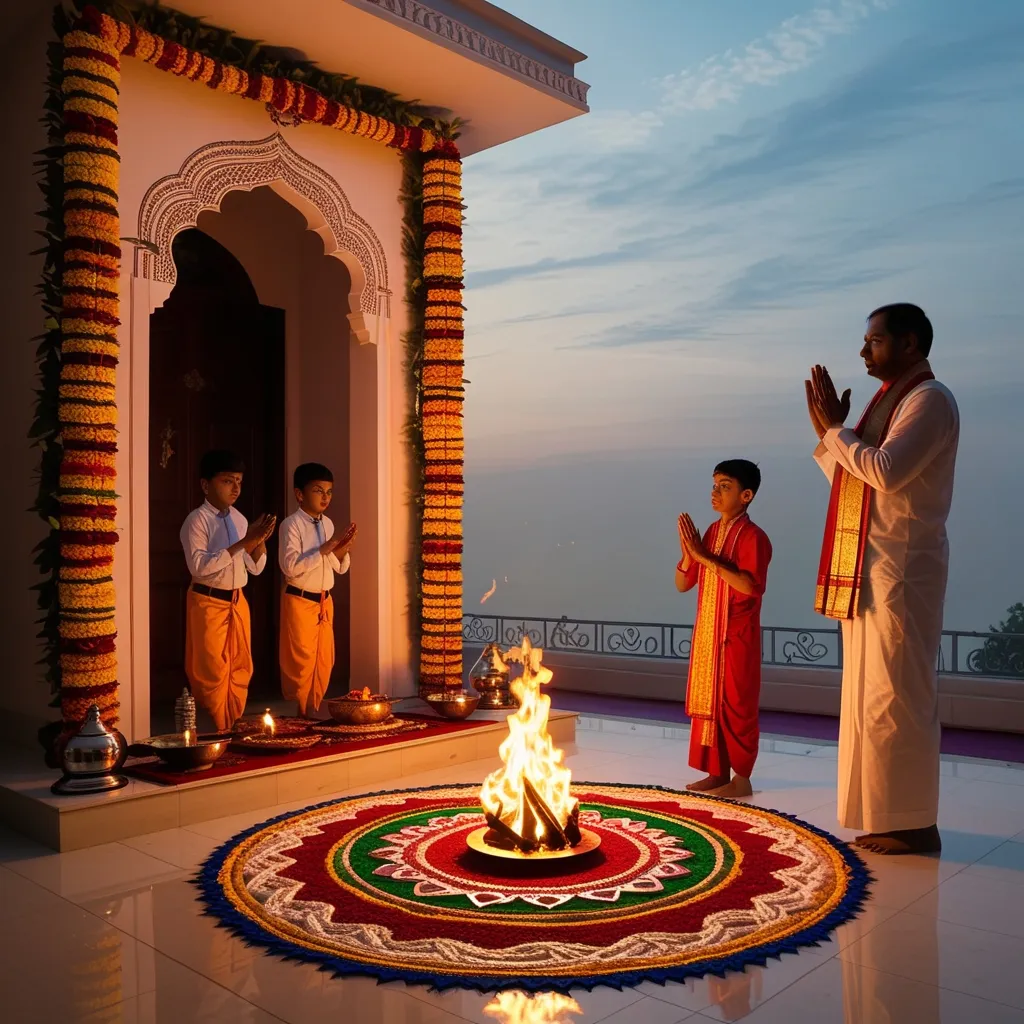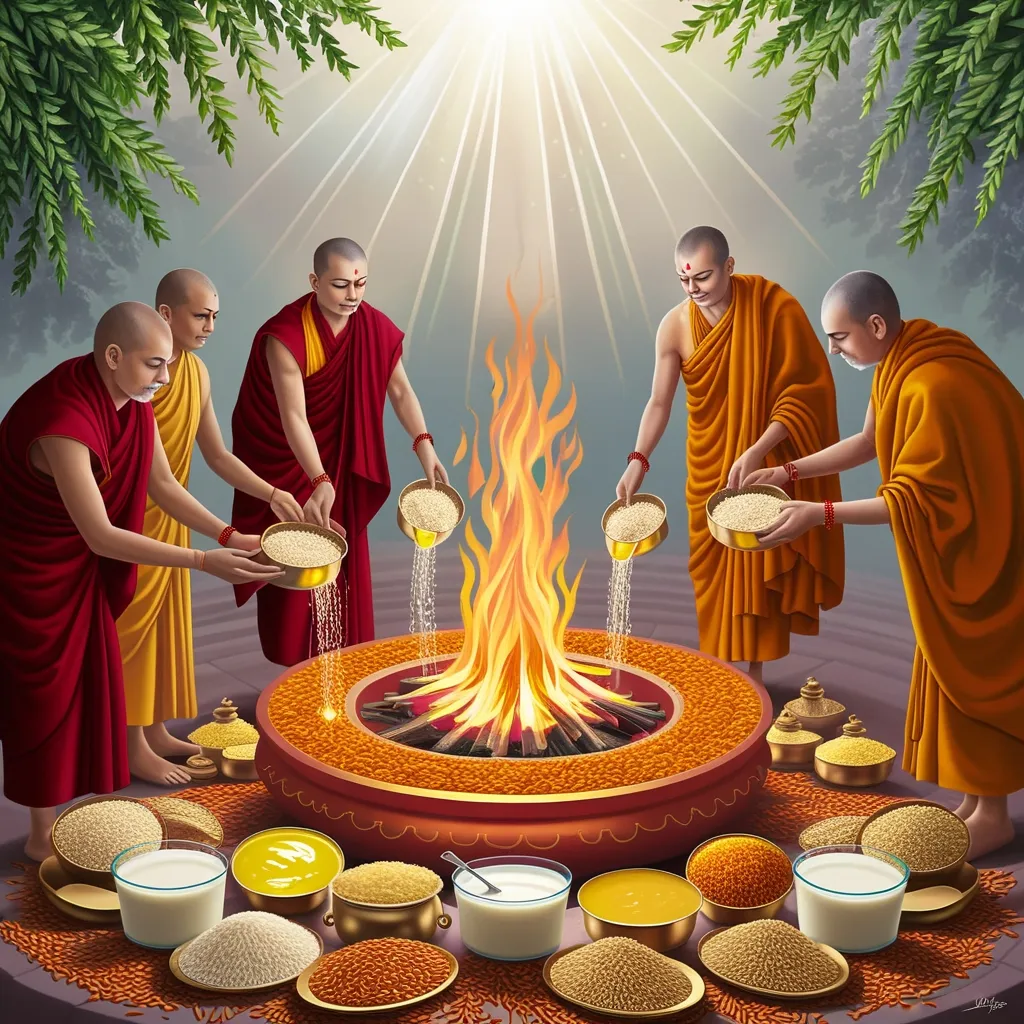In the vibrant tapestry of Hindu tradition, the Yajurveda stands out as a vital scripture, deeply intertwined with various rituals that touch upon different aspects of daily life. Among these, the house-building rituals hold a special place, designed to bring prosperity, protection, and an aura of positive energy to one’s abode.
The Yajurveda, one of Hinduism’s revered ancient texts, is a treasure trove of prose mantras and rituals. When constructing a new home, the guidelines provided by the Yajurveda ensure that the space is filled with auspicious vibes and safeguarded from any negative influences.
Now, when one talks about house-building, the Vastu Puja comes to mind instantly. This crucial ritual is all about paying homage to the space and the elemental forces that reside within it. Imagine offering flowers, fruits, and grains, each with their own symbolic significance, to honor Vastu Purusha—the spirit of the land and space. The chants, the offerings, and the overall vibe collectively work to fill the home with positivity, steering clear of any bad luck, and often bringing joy and success.
To add another layer of sanctity, there’s the Homam ritual. Picture a sacred fire, its flames dancing and casting a serene glow, as a learned priest chants invocations. The offerings made into this fire are not just symbolic; they carry a deep belief in purifying the atmosphere, repelling any inauspicious things, and promoting spiritual well-being. It’s like setting a spiritual firewall around your home, ensuring peace and prosperity for everyone living there.
The Yajurveda takes this a step further, emphasizing a harmony with nature and the universe. It’s a poetic dance of balancing the five elements—earth, water, fire, air, and space. By invoking Lord Ganesha, revered for helping overcome obstacles, these rituals ensure a smooth and blessed process of establishing a new home.
Various rituals pepper the journey of building a house, each with its unique significance. The Darṣapūrṇamāsa rituals involve offering cow milk to the fire. Imagine this act symbolizing nourishment and growth, powering your home with these vital energies. The Agnihotra ritual, with its daily oblations of milk into the fire, is another cornerstone. These acts, deeply rooted in ancient wisdom, are believed to bestow long life, health, strength, prosperity, security, tranquility, and contentment.
Seasonal sacrifices add another beautiful dimension to these rituals. Think about offering the first fruits of your harvest, a nod to nature’s bounty, hoping for favorable conditions like timely rain. Such rituals often transform into communal festivities, where people gather to witness and partake in the ceremonies, basking in the collective energy and joy.
An interesting aspect of the Yajurveda is the distinction between inner and outer yajna. Inner yajna is an esoteric journey, a series of actions occurring in the subtle body, aimed at ascending to higher planes of consciousness. It’s about personal transcendence, an inner voyage not everyone embarks upon. Hence, the outer yajna was formulated, making these rituals accessible to all. Picture the offering of ghee and various items into a fire, accompanied by melodic mantra chants, an outward rite conferring material well-being and spiritual growth.
Decorations aren’t merely for visual appeal in these rituals. Drawing colorful ‘rangoli’ patterns at the entrance, for instance, isn’t just an artistic endeavor. Each design and hue carries deep symbolic meanings, believed to invite good luck and prosperity into the home. This attention to detail helps create a sacred atmosphere, bridging the physical space with the spiritual well-being of the inhabitants.
Community participation plays a monumental role in these house-building rituals. Visualize groups or families gathered around fire altars, collectively partaking in the ceremonies. This collective effort is believed to establish a direct connection to the inner worlds of ancestors, devas, and gods. The blessings from the divine, derived from these yajnas, are thought to bring harmony and well-being within the community, strengthening social bonds.
The Yajurveda isn’t just about rituals; it delves deeply into philosophical realms as well. The Isha Upanishad, a part of this scripture, waxes lyrical about the inner Self (Atman, Soul) and the unity of all beings. Understanding these philosophical underpinnings adds a layer of depth to the rituals, highlighting the connection between the material and spiritual realms.
Despite its ancient origins, the Yajurveda’s house-building rituals have found resonance in contemporary times. In fact, these rituals have not only endured but also grown in popularity, transcending geographical boundaries. Families and communities continue to perform these age-old practices, seeing them as a means to create a positive environment, ensuring peace, prosperity, and protection for their homes.
In essence, the Yajurveda’s house-building rituals are a beautiful blend of time-honored wisdom and present-day relevance. They aim to create a harmonious and sacred space, weaving a connection between the home, nature, the universe, and the divine. Performing these rituals is akin to embarking on a journey, one that hopes to set the foundation of a new life filled with positive energy, prosperity, and a protective aura.






